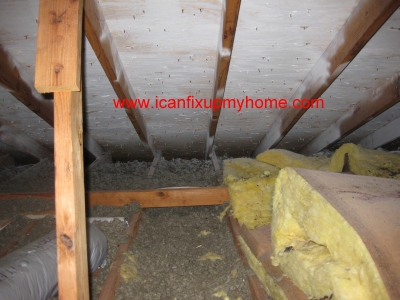Winter or Summer, You Probably Need More Thermal Mass
by Kelly R. Smith
|

Of course, fiberglass insulation is the most common insulation in existing homes and new construction. It doesn’t require any special equipment to install and it’s more economical than spray foam. In fact, it is one of the easiest (although itchy) DIY projects to increase your home’s energy-efficiency.
What’s up with Soy Spray Foam Insulation?
Nope, not a joke. If you’re familiar with the fact that soy beans are an easy to grow crop and do well in many climates, you’ll understand why it makes such a green and sustainable building material.
Soy spray foam insulation is sprayed on as a liquid which quickly expands and fills all voids, making a very air-tight building. You might hear it called a tight envelope. And it’s water-based so there’s no questionable chemicals.
Now is the Time To Beef Up Attic Insulation
If your home is already built and occupied, insulating walls can be problematic to do yourself, but installing attic insulation is a snap. And it’s not always so hot up there to make it a miserable job if you do it in the spring or fall.
But that stuff is itchy! That’s because the tiny fiberglass fibers stick into the pores on your skin. There are ways to handle it, though. You can wipe your arms down with fingernail polish remover. The active ingredient is acetone. Save big bucks by buying a can of it at the home improvement store.
I used to install a lot of the stuff in the summer when I was installing suspended acoustical ceilings and framing walls and hanging drywall. I lived in an apartment at the time. After work I’d just slip into my swimming suit and hop in the pool.
That took care of it. I suspect that it just washed off, although logically, it seems like the cool water would tighten up the pores. Whatever. It worked
Rockwool: the Insulation From Hell
Rockwool is the worst, no doubt about it. It’s also a fiber kind of construction material. It also has some glass-like chunks of stuff I can’t even speculate about. I just know they would dull the blade of a utility knife quicker than anything I’ve ever seen.
How Much is Enough?
Good question. It’s tempting to say as much as you can stuff up there, but there is a point of diminishing returns. Owens-Corning (the pink panther people) tell us “The amount of insulation to add depends on two factors – the amount and type of insulation already in place and the recommended R-value for your location.” Well, duh.
The minimum in the US depends of where you live but the average maximum that the government recommends is R-60. In the south, the minimum is R-30. It increases as you go north, finally getting to a minimum of R-48 if you live in, say, Nebraska or Minnesota.
Looking for more great content? Visit our partner sites:
Do you need an article written and featured on one of our sites or yours to promote your business? I specialize in blog-writing. Hire Me!
Looking for more great content? Visit our main site I Can Fix Up My Home or our partner sites:
I offer article and blog-writing services. Interested? Contact me for a quote!
About the Author:
 Kelly R. Smith is an Air Force veteran and was a commercial carpenter for 20 years before returning to night school at the University of Houston where he earned a Bachelor’s Degree in Computer Science. After working at NASA for a few years, he went on to develop software for the transportation, financial, and energy-trading industries. He has been writing, in one capacity or another, since he could hold a pencil. As a freelance writer now, he specializes in producing articles and blog content for a variety of clients. His personal blog is at I Can Fix Up My Home Blog where he muses on many different topics.
Kelly R. Smith is an Air Force veteran and was a commercial carpenter for 20 years before returning to night school at the University of Houston where he earned a Bachelor’s Degree in Computer Science. After working at NASA for a few years, he went on to develop software for the transportation, financial, and energy-trading industries. He has been writing, in one capacity or another, since he could hold a pencil. As a freelance writer now, he specializes in producing articles and blog content for a variety of clients. His personal blog is at I Can Fix Up My Home Blog where he muses on many different topics.





Denim insulation is a good alternative if one has sinus issues. It does not off-gas.
May I also suggest radiant barrier paint for exterior walls.
Is it practical for a DIY homeowner to add blown in insulation to exterior walls?